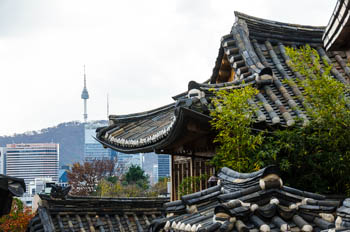
Tenaya
November
2013
Part Two
Seoul, South Korea
A visit with Corinne
| |
| HOME |
| About Tenaya |
| About Us |
| Latest Update |
| Logs from Current Year |
| Logs from Previous Years |
| Katie's View |
| Route Map |
| Links |
| Contact Us |
![]()
November 30, 2013
It feels strange to wear socks again. Jim and I are cold for the first time in months here in Seoul, South Korea. As in most international cities, the people in the city center are fashionable - slim pants and fitted wool coats, mostly in black, and boots for the women. Everyone's hair is perfect. We sport faded, baggy jeans and the outdoor adventure fabrics of not-so-chic eco-travelers and we're in dire need of haircuts. We hope we are not embarrassing Corinne.
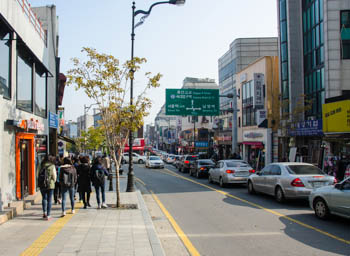
It is a five hour flight north from Palau to Incheon Airport in Seoul, from the relaxed tropics to Asia's third largest economy. Seoul is 600 years old but was mostly demolished during the Korean War. The city has been rebuilt since the 1960s with excellent public transportation. Recently there has been a push toward creative design in buildings and green spaces. 10.4 million people live in the city alone and 14 million more live in the surrounding metropolitan area. That's a lot of people, cars, busses and buildings.
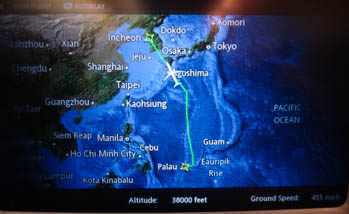
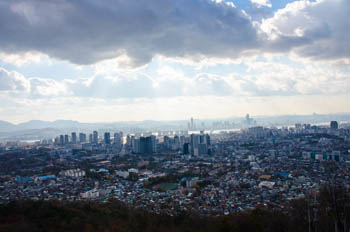
Walking around, it is apparent that fitness and health are important to Koreans. We see very few overweight people. Exercise machines are front and center at the park near Sookmyung Women's University where Corinne teaches teachers to teach English. Unlike discarded statues in forgotten corners, they are very much in motion with middle-aged folk stepping, swivelling, and swinging.
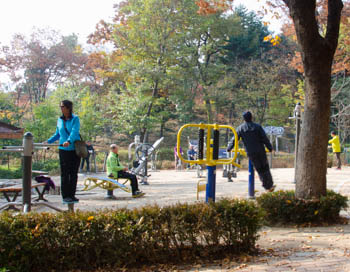
We booked flights to Seoul because I needed to see an Ear, Nose and Throat specialist and there isn't one in Palau. Doctors rotate in to work at the hospital in Koror from Tripler Army Medical Center in Honolulu and the week before we left one came to town. His wife, a dermatologist came too so I got to see both at the last minute. The ENT said my vertigo was caused by Benign Paroxysmal Positional Vertigo, BPPV for short. It happens when small calcium crystals are dislodged from their normal place and enter into one of the arched canals full of fluid in the inner ear. They displace the fluid which causes the vertigo. It's the most common cause of vertigo and usually the stones leave the canals on their own with head movement. The audiologist gave me a website - dizzinessandbalance.com to watch to fix it myself next time.
Corinne had already made an appointment for me at Severance Hospital in Seoul. They've got an international clinic where an English speaking guide accompanies you through the process. After a few tests, this specialist came to the same conclusion. BPPV. Both doctors said I am fine to dive. Yippee!

It's fun to see Corinne as a respected professor both in the classroom and with the faculty. She was able to rent us a dorm room in her building by saying her dad was a guest lecturer. A way of getting through the red tape easier, I suppose.
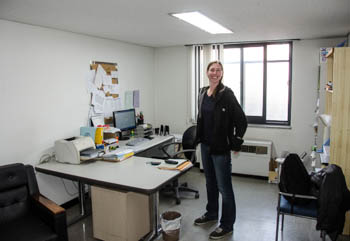
We did speak to four of her Inter-Cultural Communications classes. She introduced us as her parents who are living on a sailboat and sailing to different places. We took it from there with their questions and this website on a screen to show pictures.
We told them stories of our cultural experiences and blunders. We explained how kava is made and about drinking it from coconut shells. "No," we said, "you cannot make those faces in front of the people serving you kava!"
Jim said that Belgians keep their hands on the dining table, or at least visible. When he told his colleagues there that in the US we keep our hands in our laps unless eating, they laughed and didn't believe him. What is rude in one country is proper in the other and vice versa.
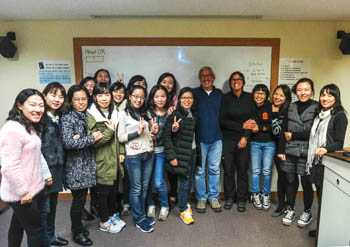
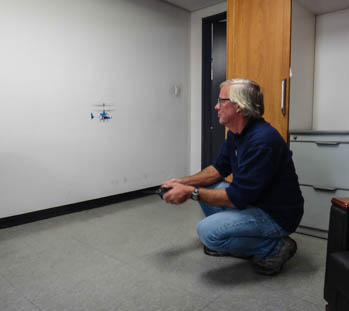
When Corinne was a toddler Jim built a robot. A two foot square aluminum thing three feet tall. It had a KIM-1 brain, one of the first personal computers, and required programming in hexadecimal. Perhaps she inherited the programming gene because she was thrilled to have Jim help her build an Arduino computer controlled robot and program it. They worked almost every day for two weeks and got the little guy moving all over our dorm room. He goes forward until he sees something in his way, stops, looks around for a clear route, backs up a little and goes in a safe direction until something blocks his way again. Then he looks around again, backs up and proceeds. Pretty cool!
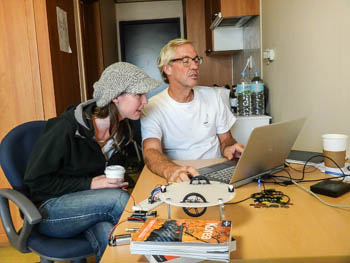
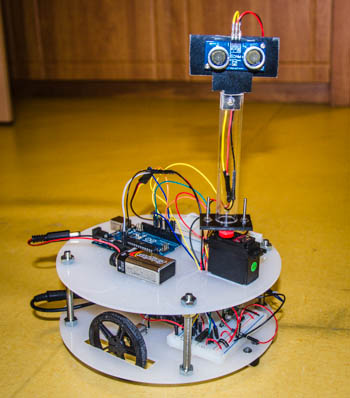
Bukchon Hanok Village is a neighborhood in the northern part of the city consisting of about 900 traditional houses, called hanok. They have peaked tiled roofs, elaborate woodwork and heated floors called ondol. Fires built under the houses with the heat channelled beneath the floors is how ondol works. Today, new houses, apartments and even dorm rooms still use the ondol system, just without the fire.
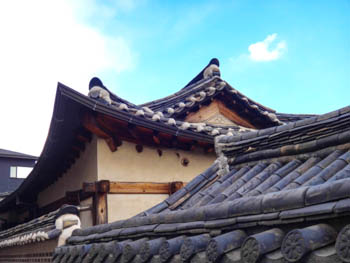
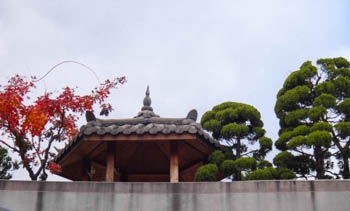
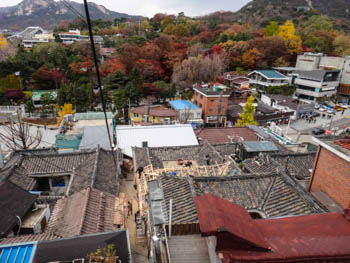
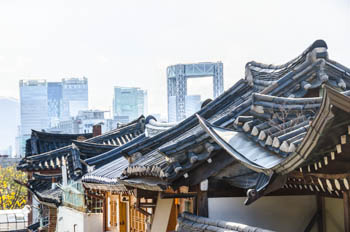
The day Corinne took us to Bukchon it snowed. It didn't stick, but Jim and I were freezing. We bought hats and later Corinne offered us her husband, Eric's, warm jackets.

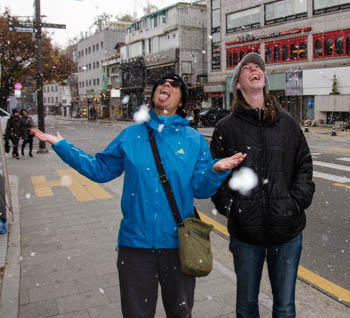
We were a little unclear on the quantity of food to order for lunch. Because it was cold we craved soup, but also wanted the delicious potsticker thingies. Way too much! My yummy seaweed soup looked a lot like stuff I've spent hours scrubbing off Tenaya's hull.
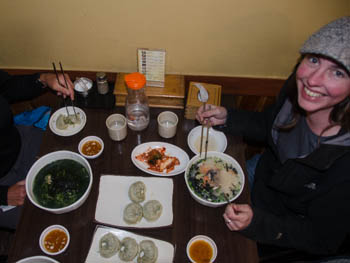
Seoul Tower sits atop a green peak called Namsan Park in the center of town. A cable car takes visitors to the top where there are, among other things, a railing with millions of padlocks. Couples come here to seal their love with a lock and usually a note of some sort.
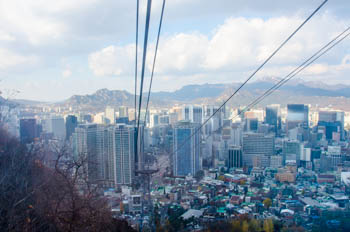
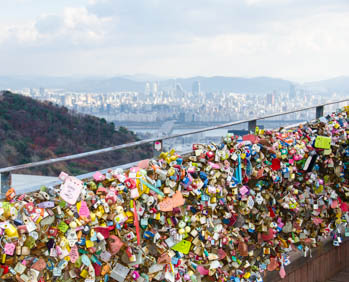
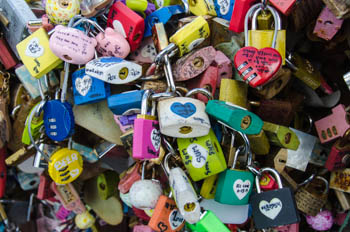
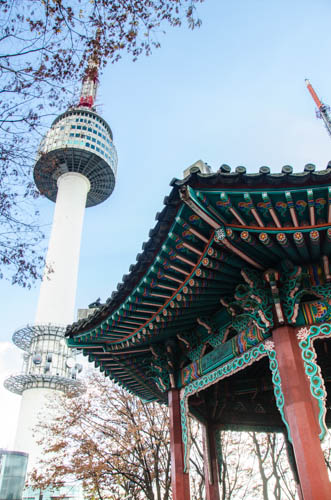
We timed it right to see several displays of traditional dancing and fighting.
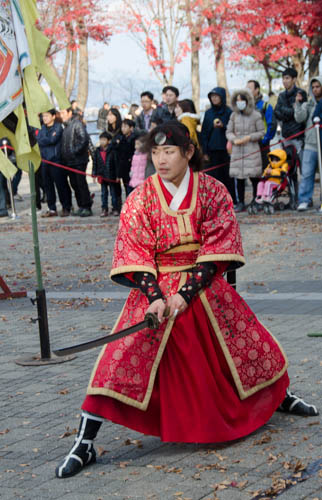
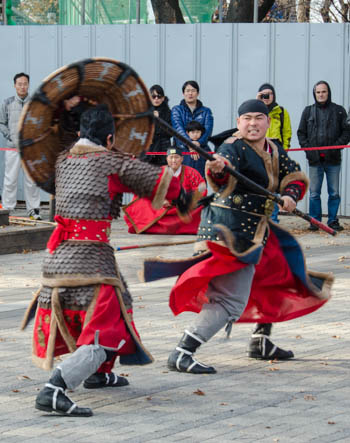
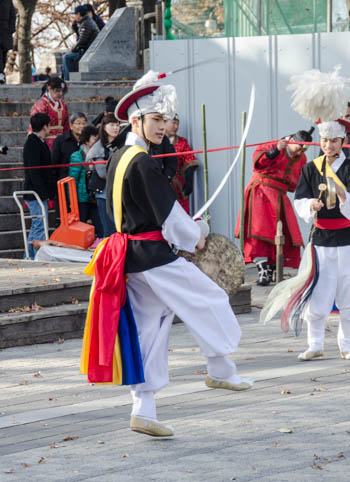
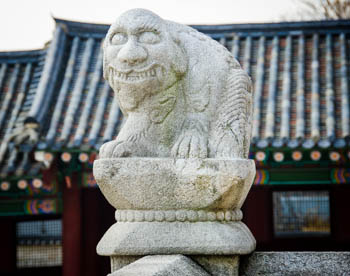
Corinne's friend, Namsoo, took us to all the places she thought we should see and all the restaurants she thought we should eat at. She even took us to her parent's home.
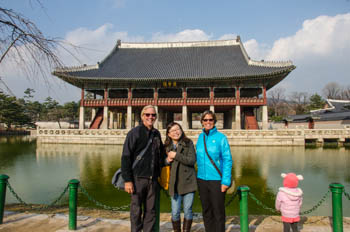
Gyeongbokgung Palace was built for the Joseon dynasty in 1395. The invading Japanese burned all the buildings to the ground in 1592. It was rebuilt in 1865 and in 1895 Japanese assassins murdered the Queen. No Koreans have lived here since. The palace was destroyed again in the early 20th century during the Japanese colonial rule. It has been rebuilt once again, this time it seems for tourism.
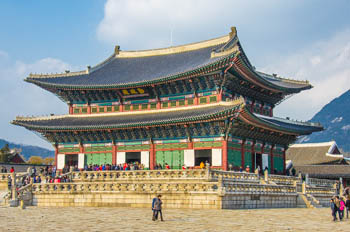
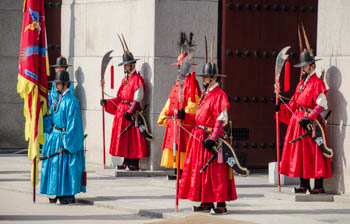
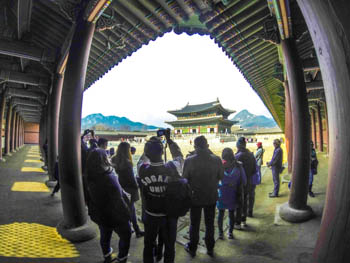
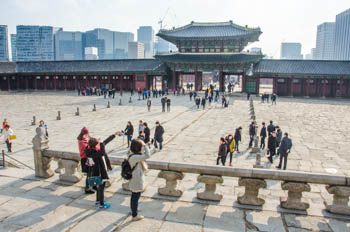
Namsoo showed us around Insadong, a popular shopping district of narrow roads and walkways and this multi-storied collection of small shops.
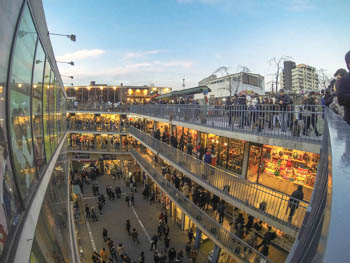
Food. What we will remember most about our time in Seoul is the food. Corinne took us for bibimbap, a healthy bowl of rice, greens, veggies, kimchi and topped with an egg and spicy sauce. Spicy. We will remember spicy too. Most everything is very spicy.
Namsoo made sure we tried lots of different things. Below we are eating Sam Gye Tang, the best chicken soup we've ever had. Below that, all kinds of marinated barbecued meats. Some we wrapped up in greens, others we put in our mouths at the same time as a clear, cold, slushy kimchi. Every meal comes with three or four different sides of kimchi which is fermented veggies. Most are spicy but some are sour. A few are sweet.
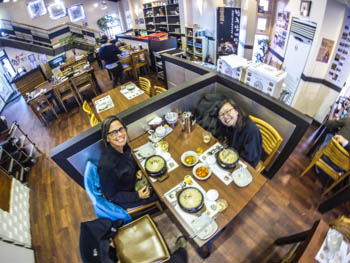
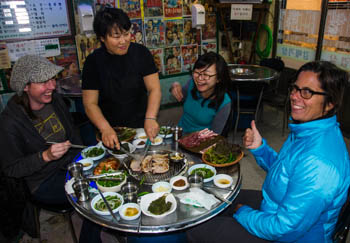
Namsoo also took us to a food market, Gwangjang market. Rows and rows of people in small stalls make all kinds of food for immediate consumption.
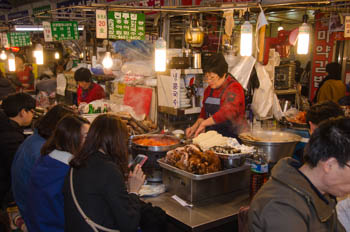
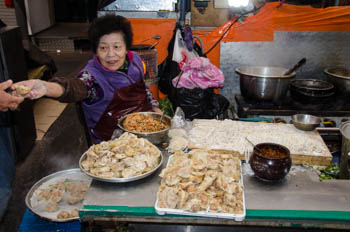
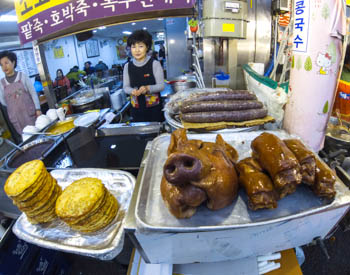
Namsoo's parents live two hours south of Seoul in a town called Cheong-Ju. For some reason I thought it would be small and rural. I was wrong. Her parents live on the 29 floor, no where near the top of their building. 10,000 people live in the few buildings of the immediate vicinity.
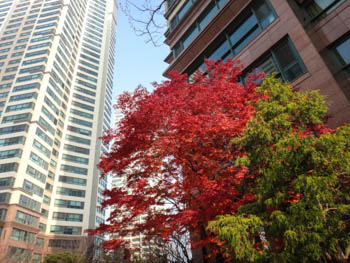
Her parents picked us up at the train station and we went straight to a restaurant for dinner. Everything was made with buckwheat - noodles, pancakes, fried noodles ... all were all delicious, most were spicy. Afterwards Namsoo's mother served Chinese tea the traditional way while we sat on the warm floor.
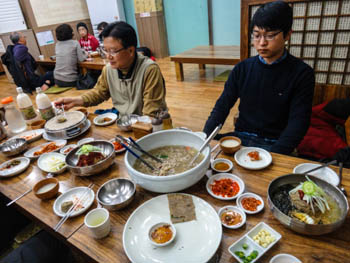
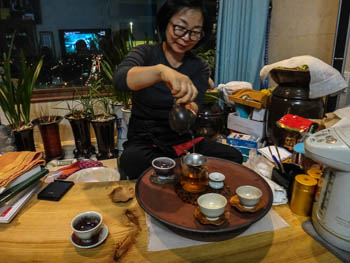
Namsoo's mother visits the Buddhist temple, An shim sa, almost everyday. It means really peaceful heart temple. The atmosphere is tranquil and serene. Most people bow 108 times in front of the Buddha. Visitors are given a pass with just three bows. The head monk told us she bowed 3000 times a day for 100 days after she became a monk.
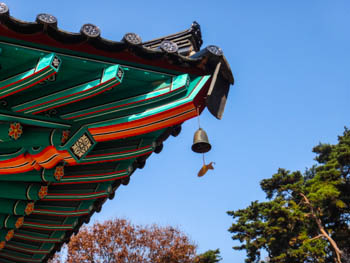
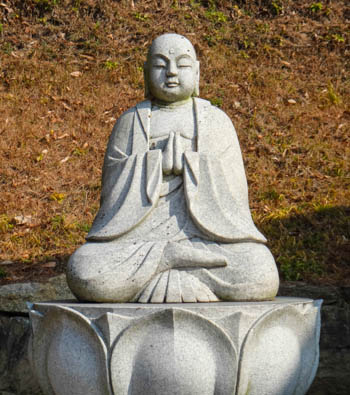
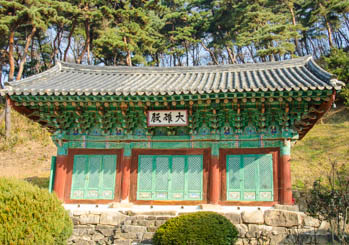
Corinne and Eric were married in the temple in June. Normally photographs are not allowed but the monks made an exception for the ceremony.


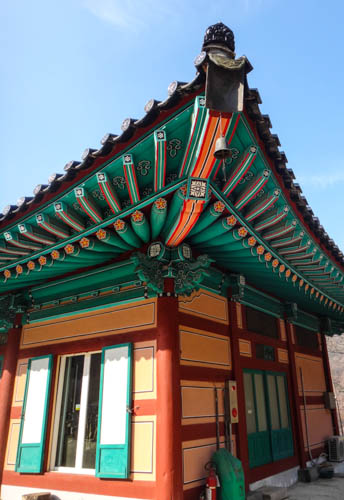
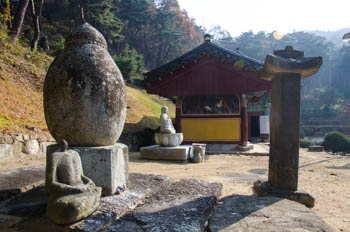
Ladies prepare lunch for the monks everyday at 11:15. Some of the food, like kimchi, is stored in pots outside. The monks eat heartily and they like coffee. And chocolate cake.
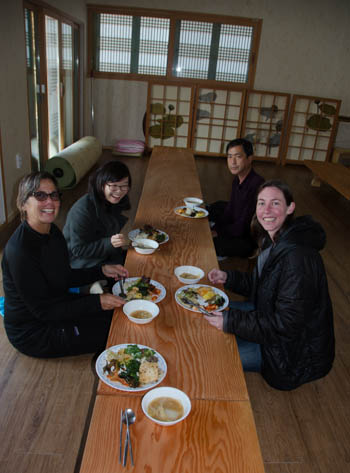
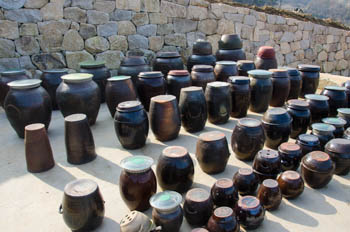
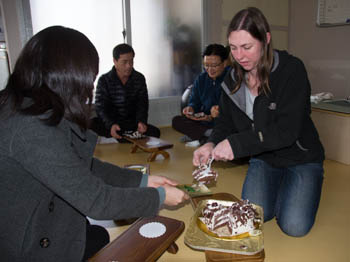
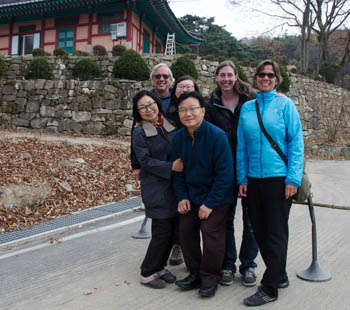
Gam sa hob ni da Namsoo, Mrs. Sung and Mr. Kim! Because of you, we had an wonderful taste of Seoul. And thank you, Corinne, for taking time out of your busy schedule to spend with us.
Go to January 2014 Part One - Palau and the Rock Islands
